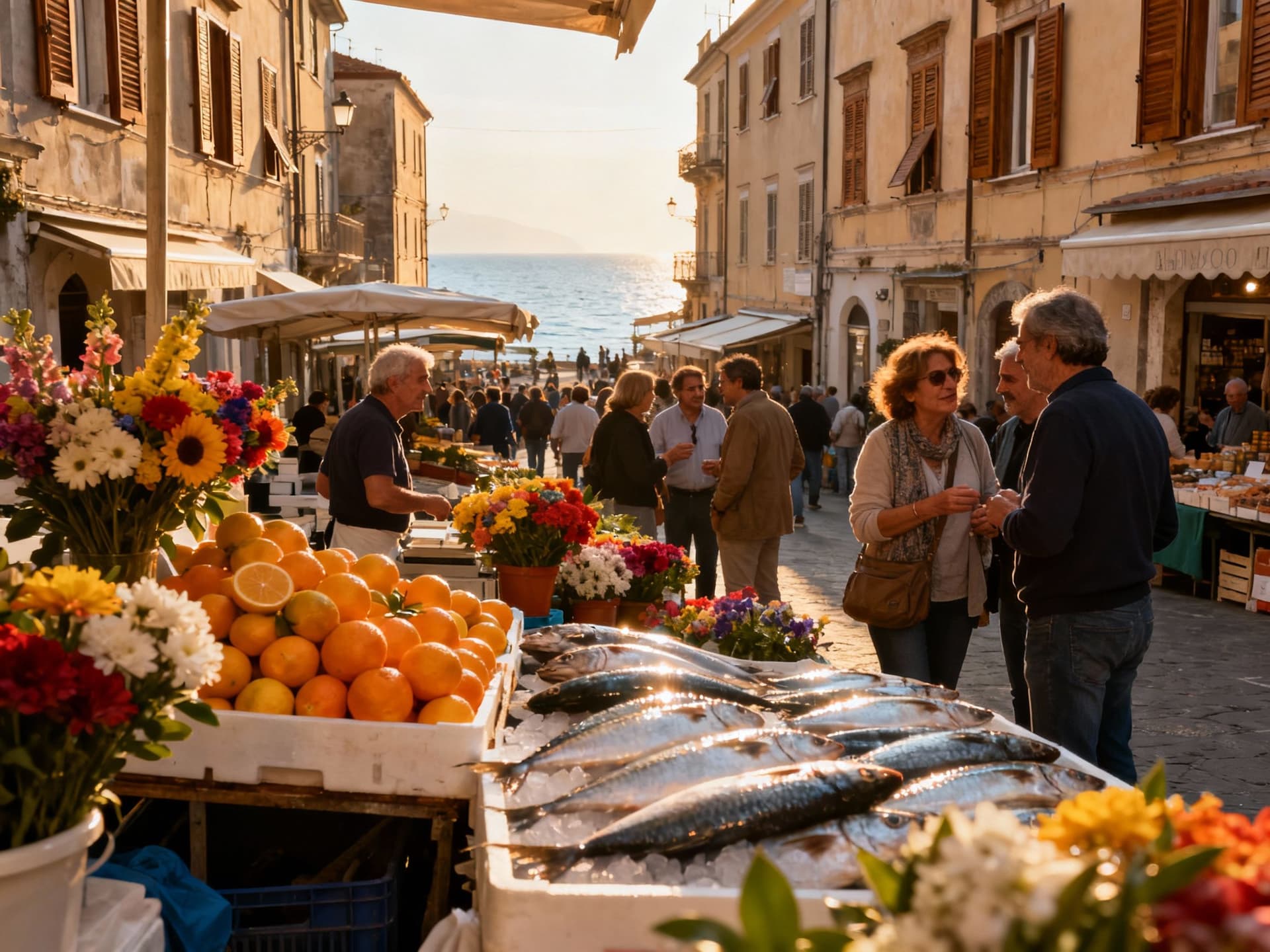Italy: Where High‑Speed Rails Meet Neighbourhood Life
Italy’s lifestyle pull masks a new infrastructure story: high‑speed rail, regional airports and digital rollout are reshaping where yields and lifestyles meet.
Imagine stepping out for a 9am espresso on Via del Corso, then catching a lunchtime high‑speed train to Milan for a meeting — in Italy, everyday life stitches together historic piazze, efficient rail, and neighbourhood rhythms. That combination is the real infrastructure story: transport, digital connectivity and targeted public investment are reshaping where returns and lifestyles align, and international buyers should weigh both atmospherics and access when underwriting value. (See recent market analysis.)
Living Italy: rhythm, neighbourhoods, seasons

Italy’s daily tempo is local. Morning markets in Palermo’s Vucciria and aperitivo crowds in Milan’s Navigli co-exist with slow olive‑harvest rhythms in Puglia. Recent coverage of Puglia’s surge shows how improved access and lifestyle storytelling can reprice formerly overlooked regions — a pattern investors see when transport links, flight connections and digital infrastructure arrive together.
Neighbourhood spotlight: Rome’s Trastevere to EUR — contrasts that matter
Trastevere smells of wood‑fired pizza and late-night conversation; EUR offers broad boulevards and modern offices. For an investor, the difference isn’t just character — it’s tenant profile. Short‑let demand concentrates in Trastevere and Centro Storico, while EUR favours longer‑term corporate or embassy leases. As investors shift from Milan’s overheated centre to Rome’s diversified pool, infrastructure upgrades and municipal planning are central to underwriting rental stability.
Food, coast and seasonality: Amalfi, Liguria and Puglia in contrast
Picture morning fish stalls in Amalfi, late‑summer beach clubs in Liguria, and olive groves in Puglia. These microclimates create sharply seasonal occupancy patterns. Where direct flights and frequent rail service reduce seasonality, yields stabilise; where access is poor, prices swing with tourism peaks. The upshot: lifestyle allure must be tested against connectivity metrics before you price return expectations.
Infrastructure that reprices neighbourhoods

Public and private transport investment is actively shifting where value accrues. Italy’s FS Group has published a multi‑billion strategic plan to expand high‑speed, regional and road capacity; Trenitalia’s cross‑border Frecciarossa links to Germany and planned fleet renewals materially improve access and absorb demand previously met by air.
Why rail matters to yields
Rail upgrades compress effective distance. The Hitachi order for new ETR1000 trains and Trenitalia fleet modernisation reduce travel friction between Rome, Florence, Milan and secondary cities — increasing commuter catchments and rental pools. As rail reduces commute time, suburbs and medium cities often reprice faster than seaside holiday towns without improved year‑round connectivity.
- Infrastructure drivers that change investment math
- High‑speed rail and cross‑border routes increasing inter‑city demand and business travel.
- Regional airport upgrades and new direct routes (e.g., Bari and Puglia) that broaden international buyer pools.
- Digital and fibre rollout in secondary cities improving remote‑work tenancy and long‑term stays.
Making the move: practical ways to match lifestyle and returns
Dreaming of a terrace in Florence or an apartment near Navigli? Translate that image into variables: price per m², expected gross yield, seasonality adjustment and tenant profile. National averages mask sharp regional spreads — Milan and Florence trade at multiple times the southern average — so start with numeric anchors before emotional choices.
Property types and how they map to lifestyle
Historic centre apartments deliver lifestyle but often higher maintenance and regulatory limits on works. New builds or converted warehouses near stations offer stable yields and easier lettability to professionals. Villas in Puglia or Sardinia can be cash cows in summer but need strong year‑round access to avoid hollow months.
How local experts close the gap between vision and underwriting
- Work with a bilingual, on‑the‑ground agent who can: (1) verify building compliance with local heritage rules; (2) model seasonal revenues versus fixed costs; (3) identify short‑let versus long‑let demand by micro‑neighbourhood; (4) access off‑market stock near new transport links.
Insider knowledge: mistakes expats make and how to avoid them
A common error is assuming national progress benefits every town equally. Antitrust probes and regulatory shifts (for example around rail access) show infrastructure outcomes are political and uneven. Expect project slippage; price in execution risk rather than assuming infrastructure will instantly raise rents.
Cultural and seasonal red flags
- Buying in high‑tourism towns without year‑round demand: high vacancy risk in low season.
- Underestimating heritage restrictions — permits for works in historic centres can double timelines.
- Ignoring local mobility: properties 20–30 minutes from a high‑speed station often reprice faster than isolated beachhouses with poor road links.
A three‑step checklist before making an offer
- 1. Map transport: confirm journey times to nearest HS station and international airport, not just kilometres.
- 2. Stress‑test seasonality: model 12 months of real occupancy and costs (utilities, management, taxes).
- 3. Validate local planning: get a certified technical report on permitted works and energy retrofit potential.
After taking these steps you’ll have translated the lifestyle you fell in love with into a defensible investment case. Italy rewards buyers who value place and access equally: a street‑level café culture plus reliable transport yields better occupancy and long‑term capital appreciation.
Ready to act: begin with a micro‑market analysis (30‑minute commute bands around stations), request recent rental contracts and ask your agent for off‑market listings near upcoming transport projects. That’s how you convert the aperitivo dream into a numbers‑first purchase that performs.
Norwegian market analyst who relocated from Oslo to Mallorca in 2016, guiding Northern buyers through regulatory risk, currency hedging, and rentability.


